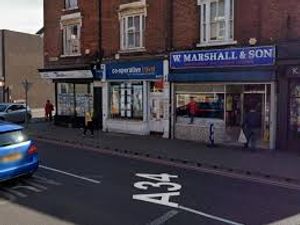Crime wave hits West Midlands at fastest pace for 10 years
Crime across the Midlands continues to rise at the fastest pace in a decade, new figures showed today.

In the West Midlands and West Mercia force areas crime increased by 14 per cent, while it increased by 13 per cent in Staffordshire.
And there were significant increases in house burglaries, robberies, thefts, and car crimes, which in some cases had risen by more than 40 per cent.
In the West Midlands, house burglaries have risen by 33 per cent, robberies by 23 per cent, and violence by 13 per cent.
In Staffordshire, house burglaries have risen by 27 per cent, robberies by 25 per cent, and violence by 14 per cent.
In West Mercia, house burglaries have risen by 42 per cent, robberies by 25 per cent, and violence by 19 per cent.
The figures were recorded between June 2016 and June this year.
West Midlands Labour Police and Crime Commissioner David Jamieson said: "The rise in crime in the West Midlands and across the country is a major concern. These figures are further evidence the government needs to change course on police funding.
"Officers at the force work around the clock to prevent and catch those who decide to commit crimes and they are facing ever greater demands from an increasing threat of terror, levels of cyber-crime and a rise in the number of reported sex offences.
"The West Midlands Police has lost £145 million from central government since 2010. Despite being rated as outstandingly efficient by the Independent Inspectors the fact we have , fewer officers fighting crime is starting to take its toll.
"Despite the challenges faced, we are determined to get on with the job of keeping people in the West Midlands safe."
West Midlands Deputy Chief Constable Louisa Rolfe said: “In the West Midlands, total recorded crime has risen by 14 per cent, which is in line with the national picture.
“But per head of population, crime is lower in our region when compared to other large metropolitan areas and similar cities. It is important we understand what’s behind the rise in crime and work with others to address the root causes. In the West Midlands we have invested in local policing to work with communities and effectively address what concerns them the most.
“We understand people’s concerns around violent crime and the effect it can have on communities. While it makes up a very small proportion of overall crime, we appreciate the disproportionate impact it has on people’s quality of life and feelings of safety.
“That’s why we launched Operation Yawbridge, which has seen numerous warrants executed and more than 60 weapons seized as we disrupt criminal gangs and bring them before the courts.
“Our firearms surrender in September saw more than 140 firearms and pieces of ammunition safely taken off the streets.
“We are working tirelessly to understand the reasons why young people carry knives. We work closely with schools and parents to educate, as we continue to bring offenders to justice.
“We’re continuing our successful ‘all out’ days, with officers flooding the streets to bring in wanted suspects.
“And just last week our officers had a major impact on foreign criminals using the region’s road networks, with dozens of vehicles seized.
“We will continue to focus on the crimes that do the most harm to our communities, and this week we launched a major survey to get us better insight in to how you feel about your local police and the service we provide."
Nick Baker, Staffordshire Police’s deputy chief constable, said: “Crime in Staffordshire is increasing and we must continue to address rises in violence without injury and sexual offences in particular. Much of the increase is due to added complexities of crime and the time it takes us to investigate, against the resource we have available.
“Mobile phones and social media make crime far easier to commit and a significant proportion of these increases can be attributed to offenders harassing or sending malicious communications through these channels. This presents new challenges for us due to the amount of analysis needed on these platforms and the additional work we must undertake with our partners to reach a satisfactory conclusion that meets the needs of the victim.
“We are looking at how we can work smarter to address this and I want to be clear that any victim of crime can have confidence in our services. Victim welfare is of absolute importance to us and we continue to investigate as quickly as possible and with appropriate consideration to each case.”
Nationally, recorded crime is up 13 per cent with 5.2 million incidents in the 12 month period.
The rise in the statistics is the largest annual rise in a decade and continues a recent trend of crime increases, said the Office for National Statistics (ONS).
But the Crime Survey for England and Wales, which measures people's experiences of crime, says nationally there were 10.8 million offences – recorded and not recorded – a nine per cent fall.
John Flatley, from the ONS, said: "While improvements made by police forces in recording crime are still a factor in the increase, we judge that there have been genuine increases in crime - particularly in some of the low incidence but more harmful categories."
But he said police figures alone cannot provide ' a good measure of all crime in society'.
"The recent increases in recorded crime need to be seen in the context of the overall decline in crime indicated by the Crime Survey for England and Wales," he said.




